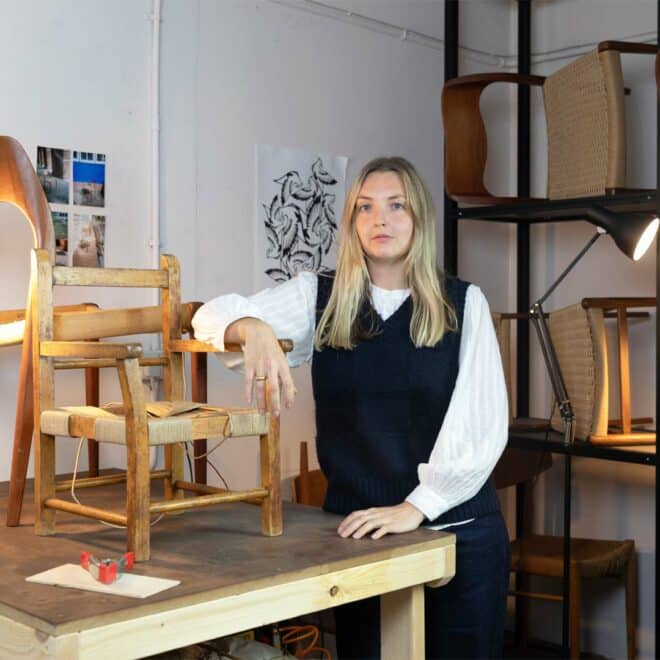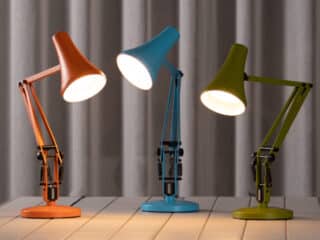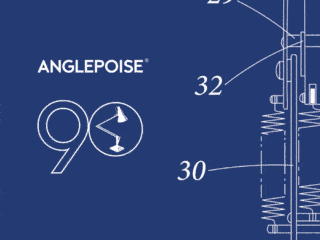It’s fascinating the people I encounter on my travels that truly capture my interest. I actively seek out those with a unique perspective, individuals with a clear passion that drives them. My aim is to understand their inspiration, what motivates them each day. Often, these conversations revolve around materials and the creative process, frequently focused on traditional crafts, sometimes with a contemporary twist. In other instances, it might be as simple as the act of repairing or reviving an object (with the talented weaver I will shortly introduce you to, I think we have both a wonderful, traditional craft and new life being given to old objects). The goal is to preserve the stories embedded within these products, ensuring these stories are also passed down through generations.
This is precisely what I strive for at Anglepoise, alongside the entire team. We embarked on a journey, delving into our product history all the way back to the 1930s. Remarkably, many of these creations are still in use today. However, they occasionally require modernisation and improvement to guarantee their safety, functionality, and continued usefulness. That’s the true value of these enduring products – they address a genuine need. In our case, it’s providing light exactly where it’s needed.
So, how can we enhance the experience for our Anglepoise enthusiasts and supporters? By simplifying the repair process, of course. Offering replacement parts, rewiring kits for adherence to contemporary electrical standards – these are the kinds of solutions we provide. Additionally, for those lacking electrical expertise, we offer a comprehensive rewiring and repair service. We take the time to meticulously restore these lamps, ensuring they can be utilised and cherished once again.
Putting pen to paper (or fingers to keyboard at least), this mental exploration led me back to Katy Bennett, owner of Home of the Good Chair, a captivating Danish cord weaver I had the pleasure of meeting. She possessed a remarkable ability to revitalise pre-loved furniture through her skilful craftsmanship and a genuine appreciation for the materials and techniques involved. While some might perceive it as a tedious, highly repetitive task, for her, it seemed almost meditative. I felt compelled to reconnect with her, to explore our perspectives and identify potential areas of mutual learning.
The outcome is a full-length video interview. It’s within these extended discussions that true wisdom often emerges. So, here it is, the complete interview. I hope you find it both engaging and informative.
Simon
So Katy. I’m sitting with you here today and I believe we met a couple of months ago. At an event we did. And I was just really fascinated by your process. What you were doing and the materials you were using. So I was just wondering if you could give us an introduction into how you started all this and what you do with these amazing chairs like the one here?
Katy
Yes. So we have secondhand chairs in Danish cord. It’s a old craft technique and and just using Danish chord which is paper. It’s paper twine. So three pieces of paper and it’s twined together. It’s really strong and robust and just weaving techniques.
Simon
So can you just talk to me about that a sec. Because what amazed me was I remember you showed me the twine and you unraveled it and as you say it’s just paper. Now to me, paper something you use for printing words on, writing on or use for origami. But to actually use it for something you actually sit on and is very strong and lasts? How does that happen? How was that discovered or how is it made?
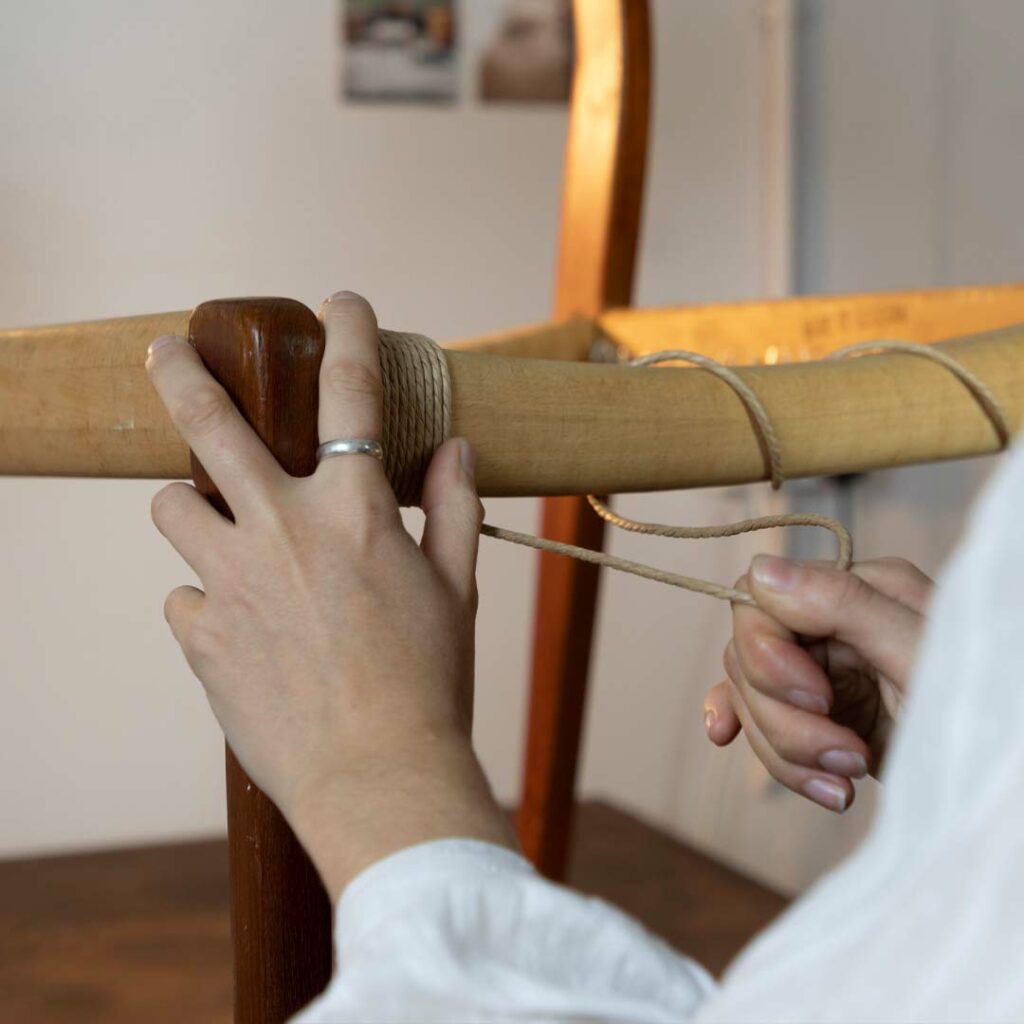
Katy
I think they used it in World War 2. At the beginning it was used as tyres, so like a replacement of tyres. So it comes in a big reel. And then I think they used that because it was so strong. I think it’s twined together. So that’s what makes it so strong and keeps its strength.
Simon
So how does it create the strength there, when it’s like paper and as we all know with paper, you get it wet and it just disintegrates. How is this different? How is that managed or dealt with? It is very strong and lasts? How does that happen? How was that discovered or how is it made?
Katy
Well its strung together really tightly, and then it’s also waxed on the top of it to protect it a little bit. So that’s the process of making it stronger.
Simon
Yeah. So you’re also saying obviously it’s Danish cord. So obviously founded there, but is this something that has really been used around the world as a material?
Katy
I think so, yeah. You see a lot of corded chairs in different countries and sometimes rush, I think it’s what is in nature and the use of natural materials. So I think people just use what they can get their hands on and then make something out of that.
Simon
Lovely. So how did you come across this technique? Was it this through your studies or through your process? I mean, how did you come to this and decide this is what I really want to do. What drew you to it?
Katy
So I love Danish design and I love making things. And I was working at the Conran Shop at the time and there was loads of paper coated chairs. And I was like, oh, this would be amazing if I could not only just sell vintage chairs, but actually make something myself. That’s what I wanted to do, so I just bought some chairs and then started doing it on YouTube and then it kind of went from there.
Simon
Then you just started playing around with the process and suddenly you realised yeah, it was working. And here you are today doing it with all these lovely chairs.
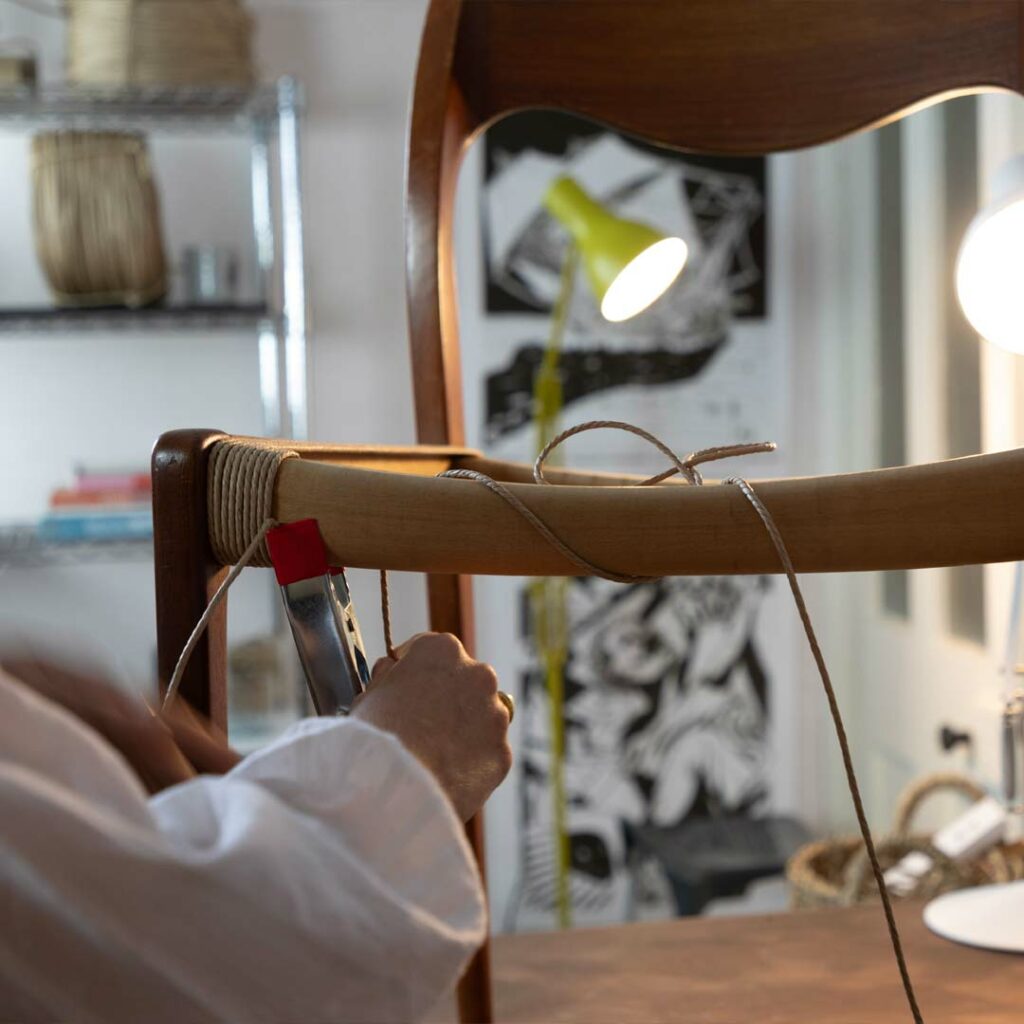
Katy
It definitely is an enjoyable process.
Simon
So how does it make you feel doing this process? Because obviously for some people they could find it quite a repetitive process. Do you find yourself getting into a mindful state when you’re doing it?
Katy
Sort of, yeah. I think it’s quite nice that it’s a slow process and you take your time on it. And definitely I think what’s rewarding is you get better along the way. So I think it’s really nice to just take it slow and then actually see your improvements. And you know every time you do it, you’ll do a better job.
Simon
You learnt this obviously as an old Craft going round a long time. How have you picked up? How have you developed the the skills or got the training to be able to do this as a craft?
Katy
I just literally learned on YouTube really, and then just kept practising and practising. I think practise makes perfect, so I think I’ve still got a little way to go and I’m still getting better each day. But I think its just doing it and just getting into your groove and knowing what feels right.
“I just learned on YouTube really, and then just kept practising and practising. I think practise makes perfect, so I think I’ve still got a little way to go and I’m still getting better each day, but I think it’s just doing it and just getting into your groove and knowing what feels right.”
Simon
Within the technique then, are there lots of different knots or different ways of doing it? Are there traditional techniques and are there modern interpretations on a traditional thing? I’m always interested in the relation between traditional craft and contemporising a craft.
Katy
Yeah, I think there are the main weaves. The envelope weave like this one and then the other weave which is one of the main weaves I do which are traditional weaves that have been around for ages. It’s just finding out how to do it and just working with that I think. But I tend to use the traditional techniques in the modern day.
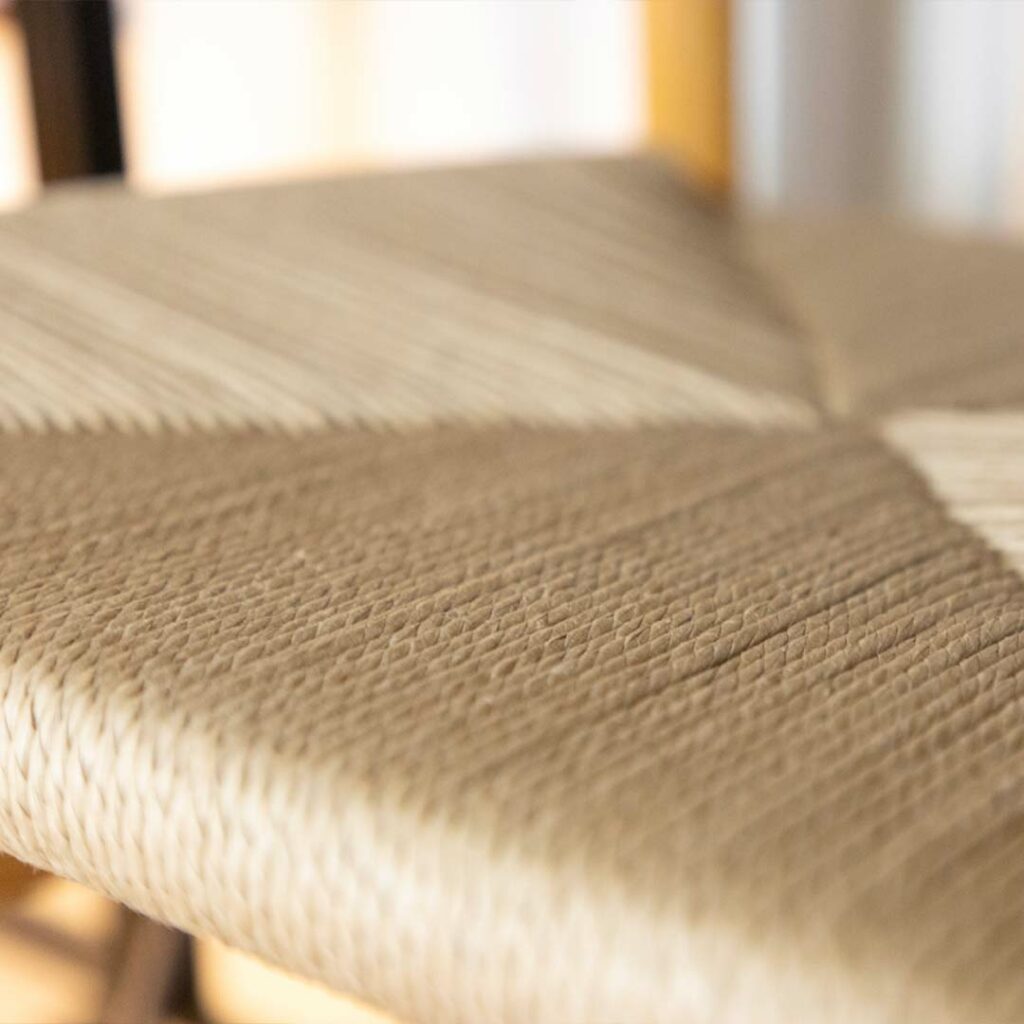
Simon
So is that something you personally just enjoy more, or get more of a sense of satisfaction?
Katy
I think I like to practise something and then do it really well with just one weave and keeping things simple but actually perfecting that one kind of weave I’m doing rather than experimenting a little bit more, just focusing.
Simon
So in many ways, you’re just trying to return return the chair back to how it was traditionally before.
Katy
Yeah, definitely. Just take those techniques into the modern day life, really.
Simon
Yeah, it’s interesting, isn’t it? Because you’ve got people like Jay Blades, and they tend to take something old and put a twist on it with a an accent or a colour. And I think it’s very interesting that you respect the the tradition and the craft and want to almost return to that. So how how did you find it when people come up to you and see you doing it. Is it something you show people how to do? It is something you’re you’re keen to teach others?
Katy
Yeah. I mean, I’d love to down the line, teach others. I do get asked sometimes how to do it and I always give advice. I think it’s nice to do that and I would definitely like to do workshops or something and teach people how to do it because I think it’s really nice when people are interested in it and they want to it themselves. So it’s keeping the tradition and the craft alive.
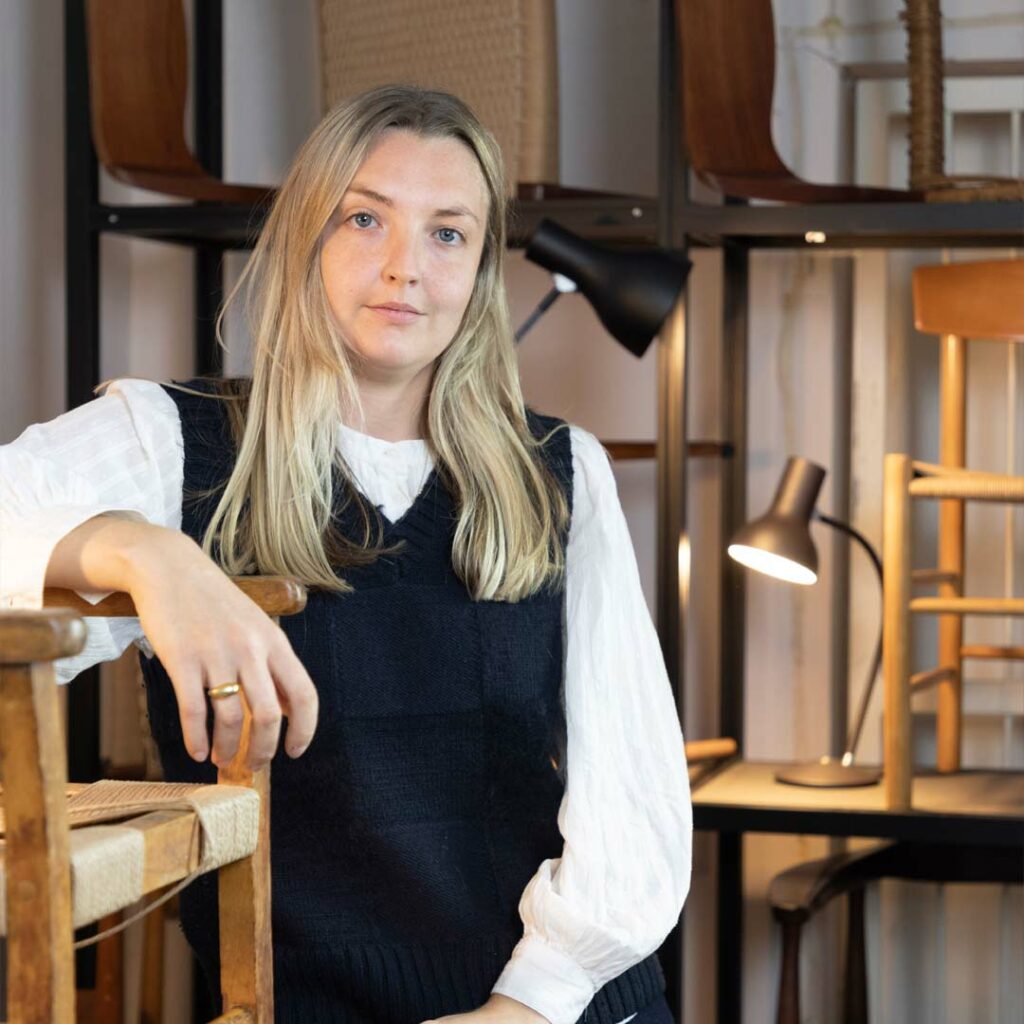
Simon
One thing I always like asking people around the why question as its one of those things that always stood out to me, it’s a bit of a Simon Sinek thing, but I think it’s always a good one, which is all about people don’t buy what you do. They buy why you do it. So I’m always very interested in the personality or the person. Behind the craft or the object, so that’s something I’d like to ask you. What is your why?
Katy
Why I’m doing this? There was a point in my life where I just really wanted to do something for myself. I think I wanted to prove that I was capable of doing something and having success with it. In the past I was getting rejected a lot from job after job and it was just a little bit hurtful, but also I just felt like I needed to do something and then just keep at it and practice it. I think just to prove a point to people that I can use my skills and I do well through the things that I’ve learned.
“There was a point in my life where I just really wanted to do something for myself. I think I wanted to prove that I was capable of doing something and having success with it. In the past I was getting rejected a lot from job after job and it was just a little bit hurtful, but also I just felt like I needed to do something and then just keep at it and practice it.”
Simon
And for us, in the simplest way to Abandon Darkness by using light or creating light. But for us it’s something that resonates and runs far deeper in us all as a company and as a business. And and the people and the families, which is for me, whenever you look at something, how can you make it better? How can you improve it? Whether it’s social, whether it’s people’s lives, whether it’s our products. For me, no product should be designed or destined for landfill. So that’s really important, which is why we have spares for all our lights.
We repair old lights, we rewire them and we’ve introduced a lifetime guarantee. Because we are custodians of these products and materials and we owe it to them to treat the materials with respect, on the one hand and also our customers with respect. So that when they buy something from us, it is truly for life and a useful item that won’t go out of fashion and it won’t become irrelevant, so I was just interested in reflecting on that because I see so many similarities in what you’re doing with the chairs. Do you want to just touch on that for a moment? How is what you do important?
“Because we are custodians of these products and materials and we owe it to them to treat the materials with respect, on the one hand and also our customers with respect. So that when they buy something from us, it is truly for life and a useful item that won’t go out of fashion and it won’t become irrelevant”
Katy
Yeah, I think it’s always really nice to work with something that’s already around. And yeah, giving a chair a new lease of life. I think it’s really important to be sustainable in the world now and just making something old. Giving like creating. Something in the modern world, using traditional techniques, I think that’s really important. Always using something that’s had its day, but also just renewing it and just giving it a new lease of life.
Simon
That’s lovely that you know this idea of objects having a life, and the idea of the relationship of the items with the family or the different family members sitting on them and enjoying the touch and the feel. And I presume that the stories the chairs must carry with them through the marks, the dents, all that sort of natural patina that tells a story.
Katy
Yeah, they’ve lasted for years and years and years and that’s also really nice. Sometimes I get clients that have had them in the family. Their grandparents have had them and some people are like, oh, I’ve had those chairs before. So it’s really nice to see that I’m kind of bringing that kind of chair back in or bringing, like, the paper corner seat back in.
Simon
Brilliant. So when you have done it … Looking back on the journey, what should you have worried about less?
Katy
My imagery being perfect and me portraying like this perfect kind of glossy image not telling my story enough through getting lost in the idea tha everything has to look great nowadays. But I think I’m a lot better at that now. I think people nowadays respond to more of a feeling of authenticity rather than just a nice picture. So I think allowing myself to tell my story and my journey through the business definitely. And just being a bit more authentic to myself, I think allowing the public to see that.
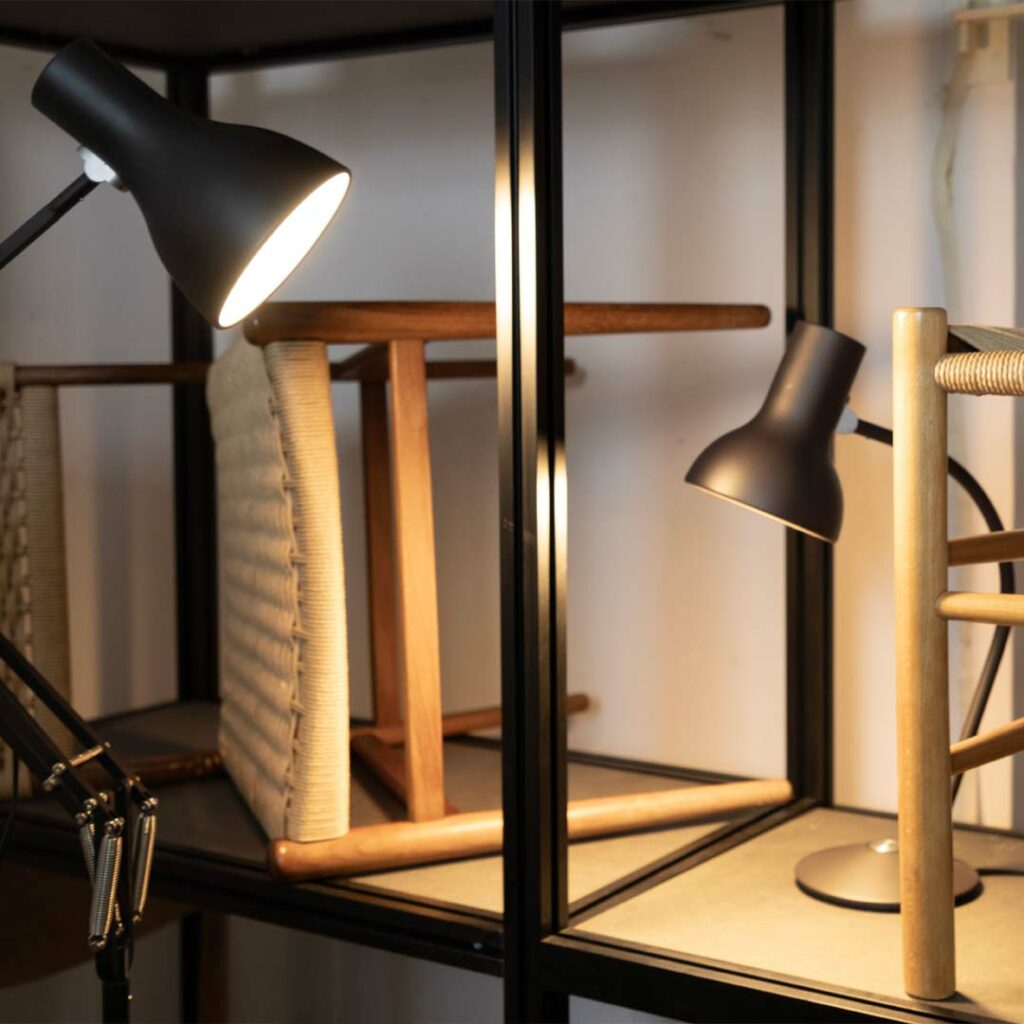
Simon
It’s a great point, I think we are touching on there is that image of the glossy mag, the photoshopped perfect objects. People are starting to see through that and I totally agree that they’re looking for something that is authentic. Authenticity is the absolute key. Authentic stories are so powerful.
Simon
What has been a myth or self limiting belief?
Katy
I’m not worthy enough. Like I said, past rejection, getting rejected, job after job. I think that made me feel really low and hurt. And I didn’t feel like I was good enough to really do anything. So I think that obviously sent me back a lot, but I think it’s how you get back up and get back on that horse and then you learn and it strengthens you in a way. But yeah, I think everyone’s worthy of doing a good thing and just finding what they want to do. What they’re passionate about in life. So I definitely think that is the self limiting belief, and sometimes I do still question that, but it’s a lot better now. You’ve just got to move on and bounce back. It makes you stronger.
“I think everyone’s worthy of doing a good thing and just finding what they want to do. What they’re passionate about in life. So I definitely think that is the self limiting belief, and sometimes I do still question that, but it’s a lot better now. You’ve just got to move on and bounce back. It makes you stronger.”
Simon
I love that you’re sort of doing one thing well. So you’ve found this thing and you just working at it. I also love the fact you say its all about the learning. For me it’s like your habit is just to get better and better. It’s not like you’re setting a goal saying I’ve gotta be here. You’re just continually striving for getting better and you probably will never reach perfection. But that that’s fine. You know you’re better than you were the day before. And that’s what matters.
What’s the mantra you’ll carry with you into your next success?
Katy
I think thoughts. My thoughts creating my reality. I think it’s always good amongst the chaos to have a dream or a goal. I think that’s what keeps me going when it’s just busy and crazy. It’s always nice to have a positive kind of dream to work towards and I think.
I’ve always been quite a bit of a daydreamer, so I think I really like just manifesting and making my thoughts and imagination and kind of turning it into reality is always really rewarding. It just moves me forwards and it keeps me going, really. But in a positive way.
Simon
And that resonates so much for me. Because I totally believe it’s your thinking that creates your reality What you’re also saying there is about dreams being actions and that is a very Japanese concept. So with Honda, when they talk about the power of dreams. Their Tagline. It isn’t about stuff that you’re just thinking, it’s about stuff you’re going to do. Because dreams mean actions in Japan, and I think it’s an incredibly powerful thing when we do hand on heart, pursue our dreams which means driving forward into our dreams and our thinking. So that’s beautiful.
What are you going to fight for?
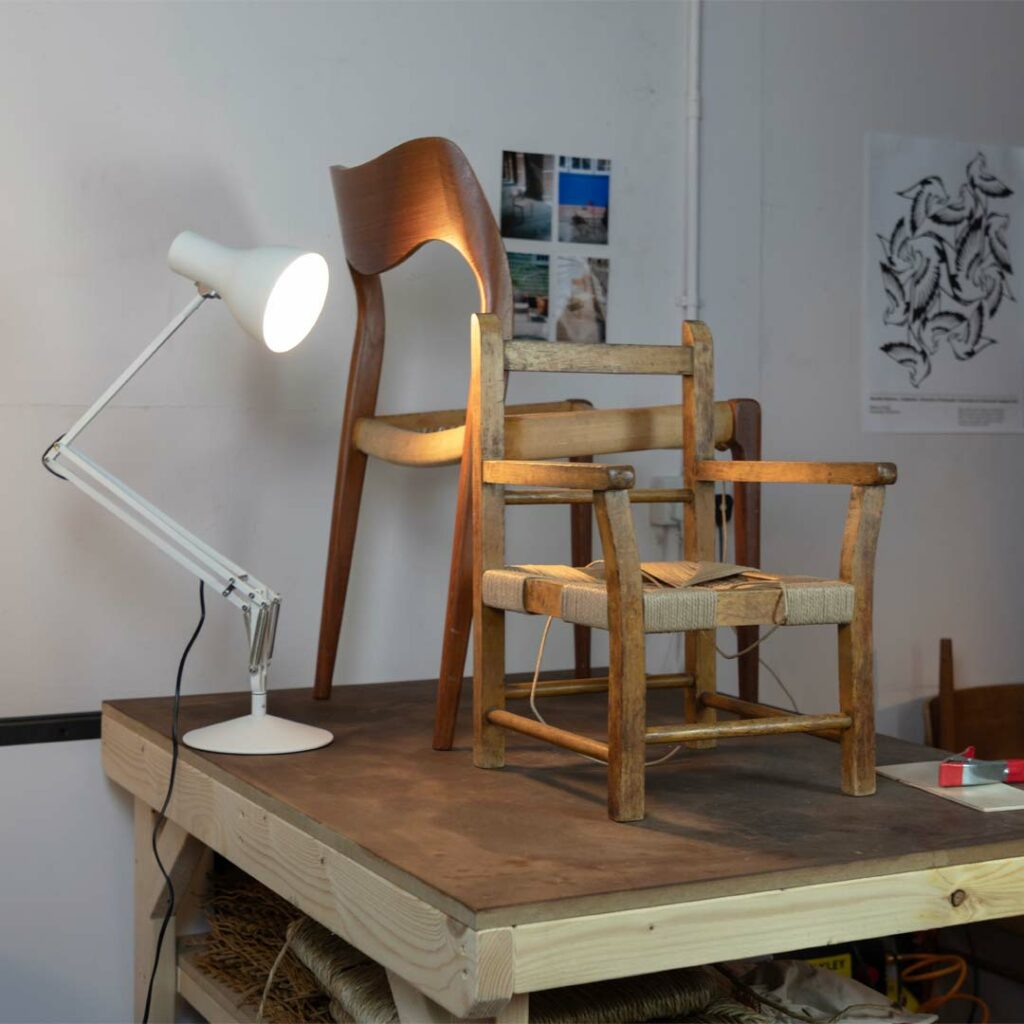
Katy
I think I’m going to fight for craftsmanship and sustainability. I think something that’s handmade, just traditional techniques being kept alive in the modern day world. I think that’s really important that sustainable materials are used. From nature, connecting with nature and justice, the fact that craftsmanship and individuals are making things by hand, I think, yeah, I will fight for this.
Simon
That’s great. Why should the competition be scared of you?
Katie
Don’t think they should be scared. I wouldn’t want anyone to be scared of me. I think I just want to be someone like, oh, I’m so inspired by what she’s doing. I guess I want to wow and impress people, obviously along the way. But yeah, I think I’m pretty humble.
Simon
What I think what’s interesting about you is why I think the reason why your competition should be scared of you. It’s because you’re so open about the process and sharing it with others and I think a lot of people, won’t do that. Especially craftspeople are very bad at quite understandably, not passing on the knowledge they have spent years learning. I can understand it because they want to protect their knowledge and their value. But obviously if one doesn’t pass that on, crafts die and don’t pass down. So I think that’s something people should be scared of. Your openness and that willingness to share because, you know, we all learn together.
What could make you unstoppable?
Katy
Unstoppable. I think a willingness to learn, a willingness to progress. I don’t think I will ever stop wanting to learn. And you know, get better each day. I think it’s definitely a journey of improving myself. I think that’s what definitely gives me the determination. I didn’t start off doing this perfectly. So it’s a journey. Just wanting to learn more and learn more about myself and the craft I’m doing and why I’m doing. It just gives me the determination to keep going.
Simon
Thanks very much for all the wonderful insights Katie. Let’s let’s pause there.
You can find out more about Katie and her process, on her website www.homeofthegoodchair.com


